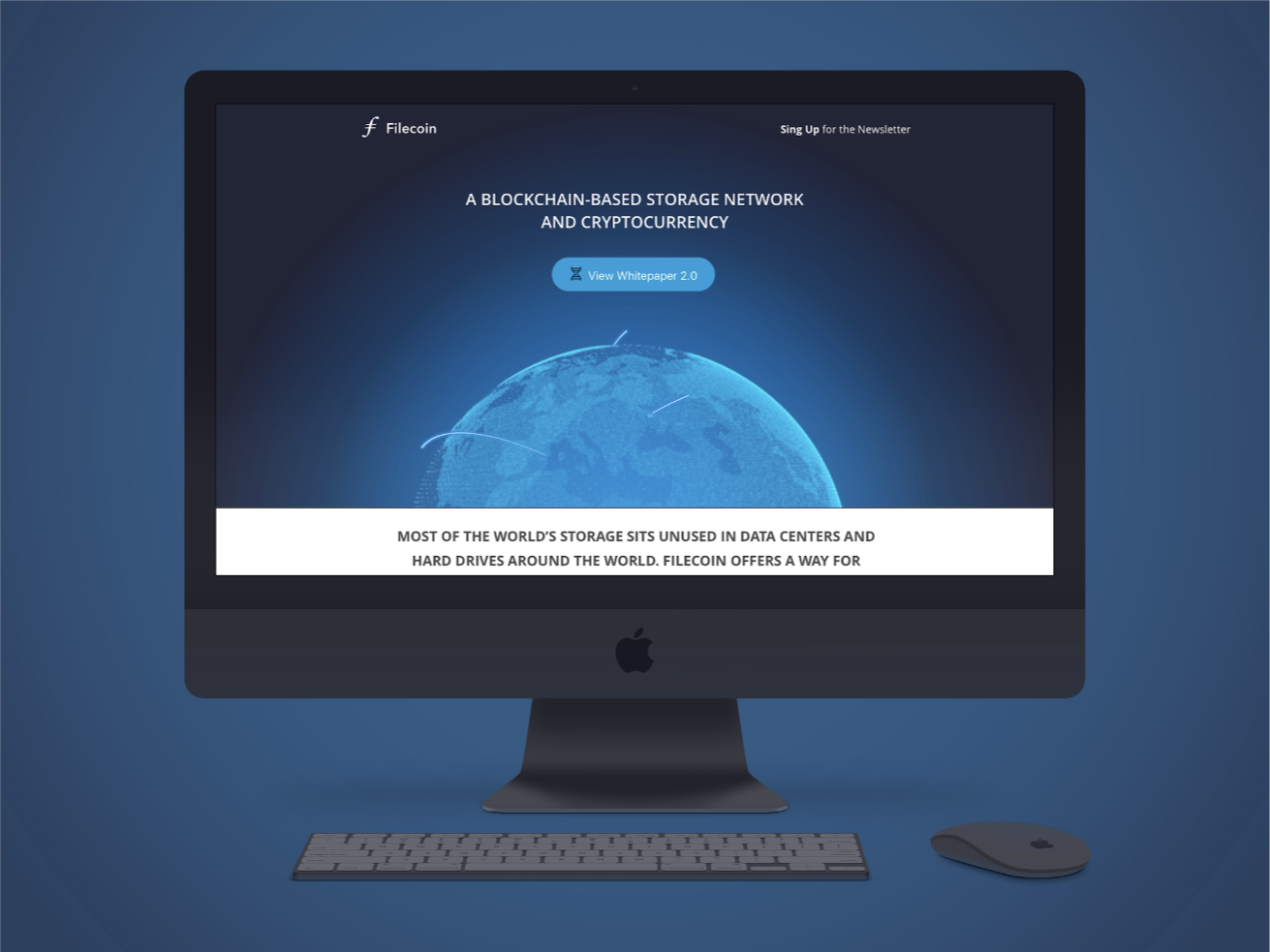Empowering B2B brands with scalable, lead-focused, professional digital design solutions.
Startup web design agency
Ramotion is a global startup web design agency that helps fast-growing companies stand out on the market and generate more customers by creating user-friendly converting website design.
Featured clients
We specialize in creating and optimizing websites for businesses of all sizes, from all stages startups. We deliver tailored solutions, expert insights, and efficient results to help them achieve their business goals.
Series of visual concepts for improving the user experience
Marketing website for a subsidiary of the CBRE Group's co-working space company
Iconography design for a payments infrastructure company with 250M+ API request per day
Official Apple tvOS app user interface development
Official Firefox rebrand and ongoing support for design projects at Mozilla
Brand identity design for an internal App Store by Universal Music
Visual identity for Adobe-owned company products
Ongoing design support for the leading destination for company insights
Designing a motion identity for Opera
Brand and marketing design support for an open source data structure server company
Ongoing design and development collaboration with an enterprise identity provider
Iconography guidelines, assets and web design for a digital forensics solution company
Redesign of the support portal and 30% improvement in users’ ability to get the answers they want
Design for a membership-based healthcare system
Iconography for a secure workspace software company with over 16 million cloud users
Rebranding for an open-source web testing platform with 5 million weekly downloads
Design for the world's first audio word processor
Brand identity for a secure data onboarding solution that processed more than 25 billion records
Website design for a B2B data provider platform with over 50 million company records
Brand identity and website for a tool used by over 80% of Fortune 50 companies' machine learning teams
Rebranding an e-commerce solution used by 180,000 entrepreneurs
Website for a blockchain data storage network that raised more than $250M+ at ICO
Rapid prototyping for an accounting software company with over 3.7 million subscribers
UX design for a medical group and technology company with a network of nearly 140,000 licensed doctors
Iconography design system for 500 million users around the world
Ongoing UX design and CRO for child care and education company with more than 200,000 children enrolled
Developing micro-interactions for the Lightning Design System
Marketing website for the cross channel marketing platform
Brand identity for a multi-chain crypto trading and liquidity hub with $10B+ in trading volume
Design for a global video game commerce company
Capabilities
Process
Industries
Aligning design objectives with a brand’s mission and goals ensures a cohesive, impactful website.
Through strategic workshops and discovery, we explore the brand’s identity and audience, reviewing brand guidelines, customer personas, and market positioning. This forms a framework for informed design decisions, including typefaces, color palettes, navigation, and layout.
Collaborating with stakeholders, we align on objectives, priorities, and expectations to minimize misalignment. Competitor analysis and industry benchmarks help identify differentiation opportunities.
By understanding user behavior, we create a design strategy that balances usability, emotional connections, and conversions. The result is a cohesive vision integrating brand identity and user experience into a strategic design framework.
A website audit is a comprehensive evaluation uncovering opportunities to improve usability, performance, accessibility, and visual identity. It provides actionable insights into website performance and identifies barriers to user engagement and business growth.
Using tools like Lighthouse and heatmaps, we analyze metrics such as load times, navigation paths, and user interactions. The audit assesses how well the design reflects the brand’s identity and supports the user journey, with accessibility evaluated against WCAG standards.
The audit identifies "low-hanging fruits" like optimizing image sizes or refining calls-to-action for immediate impact. It also highlights long-term improvements such as restructuring navigation or updating outdated visual elements.
Clients receive a detailed report with findings, prioritized recommendations, and actionable next steps, forming a foundation for impactful website enhancements.
Not every website needs a full redesign. A targeted website refresh delivers quick results with minimal disruption by addressing specific pain points without altering the core structure. Strategic updates like refining navigation, optimizing page load speeds, or enhancing visual hierarchy create measurable improvements for users and stakeholders.
This service starts with assessing performance, usability, and design elements to identify areas for improvement, such as reducing friction in user flows or updating outdated visual elements. Simple changes like adjusting font sizes or rebalancing content spacing improve readability, while performance optimizations like compressing images or minifying code enhance speed.
A website refresh is ideal for businesses preparing for events like product launches or conferences, or those extending an existing website’s lifespan while planning a future redesign. The goal is to achieve quick wins and measurable improvements without the time and cost of a full-scale project.
Information architecture and copywriting are essential for an effective website, making content intuitive, accessible, and engaging. By understanding the brand’s tone of voice, audience needs, and business goals, we structure information with a clear sitemap and user-friendly hierarchy. This simplifies navigation and aligns with user expectations to deliver a seamless digital experience.
Copywriting complements the architecture by crafting engaging, brand-aligned content, from attention-grabbing headlines to action-driving calls-to-action.
Collaboration ensures the final output meets user needs and supports strategic goals. Together, these elements create a user-centric and business-focused website.
Website concept development is a creative yet strategic process that establishes the visual and structural foundation of a website. It starts with identifying the brand’s core values and emotional goals, translating them into design hypotheses that match the audience’s preferences.
Multiple drafts explore layout, color palettes, typography, and user flows, ensuring alignment with the brand’s identity and objectives.
Concepts are tested with tools like Lyssna.com to gather user feedback, validating the design direction. Consistent content across drafts focuses feedback on visual and structural elements.
This process creates a clear, actionable framework for later phases, making it especially valuable for rebranding or launching a new digital presence. The result is a stunning, functional website that aligns with business and user goals.
Full website creation is an end-to-end service delivering a cohesive digital presence tailored to the client’s goals and audience. It begins with strategic alignment to reflect the brand’s mission and vision while achieving business objectives. A scalable information architecture organizes content for seamless navigation and engagement.
The design phase develops a comprehensive visual identity, including custom UI kits, responsive layouts, and interactive elements. Emphasizing accessibility and performance, the development phase builds a responsive, high-performing website optimized for diverse platforms. Rigorous testing ensures functionality and consistency before launch, creating a scalable, visually appealing website that drives engagement and supports long-term growth.
A web design system provides a reusable framework for simplifying updates and ensuring visual consistency. Built on atomic design principles, it organizes UI elements like buttons, typography, and color palettes into scalable modules, enabling efficient creation of pages. This is especially valuable for organizations with evolving digital ecosystems, reducing resources needed for expansion while maintaining a cohesive user experience.
The process involves identifying core design components, assembling them into patterns and templates, and testing for usability and consistency. Accompanied by detailed documentation and training, the system empowers teams to maintain and expand websites confidently. A well-implemented design system streamlines workflows, enhances collaboration, and supports long-term growth by aligning with the brand’s identity and user expectations.
Conversion Rate Optimization (CRO) is a data-driven process to enhance user engagement and achieve business outcomes. Using tools like Crazy Egg and VWO, CRO identifies friction points such as abandoned carts or low click-through rates. Data-driven hypotheses refine elements like call-to-action buttons, navigation flows, or page layouts.
A/B testing compares webpage variations to validate improvements, such as testing headlines for higher sign-ups. CRO is especially valuable for high-traffic websites, where small changes yield significant gains. This iterative approach ensures continuous improvement, aligning the user experience with key performance indicators and evolving market trends.
Website maintenance ensures a website stays secure, functional, and aligned with business goals. This service includes routine updates, performance monitoring, bug fixes, and proactive quality assurance testing to address potential issues. A dedicated project manager coordinates efforts across development, design, and QA teams.
Key aspects include performance optimization, fast-loading operations, security updates, and minor design or content updates. These efforts keep the website fresh and competitive. By ensuring consistent performance and user satisfaction, maintenance allows businesses to focus on core activities while maintaining a reliable digital presence.
Integrations with third-party services enhance a website's functionality, connecting tools like analytics platforms, customer support systems, or payment gateways. The process starts with assessing client needs and selecting suitable tools. Our team handles technical integration to ensure seamless compatibility and smooth operation.
Examples include embedding a Zendesk portal for support or integrating e-commerce platforms for online transactions. Customization aligns these tools with the brand’s identity and user expectations, improving functionality and the user experience. Post-integration support ensures systems remain efficient and responsive, maximizing value for the client.
Before starting the project, we need to understand your formal request, business goals, and restrictions. We'll also assess potential risks, such as changes in decision-makers. Communication and delivery of results will be discussed and approved, with our usual approach being a screencast and PDF/Figma presentation. Feedback will be gathered through calls. Let us know if you have any preferences or concerns.
Specialists study the brief and related materials from the client, synchronize their understanding of the brand with each other, define goals and requirements, success criteria and limitations (product, design, development).
When redesigning an existing website, an expert audit of the client's screens is conducted, flagging weak UX/UI decisions. The team clarifies all unclear points with the client. Next, competitors’ sites are analyzed, noting strong UX/UI solutions that can be adopted.
Based on the previous steps, the logical structure of the site is formed. It defines what data should be placed on each page and how the pages are connected to each other.
This allows you to visualize the structure and relationships of meaning blocks, plan the user journey, define hierarchy and logic, increase the speed of information discovery, and detect problems in the structure.
Useful when working with pages with complex architecture and non-obvious hierarchy. We can skip this step if the content is finalized and the team has no doubts about the logical architecture of the pages.
Based on the sitemap, all screens are assembled in a more detailed form. This involves determining the future grid, defining the general shape of accent blocks, positioning CTAs, and whenever possible, populating the blocks with text content. We also identify and resolve conflicts between semantic modules and ensure that content aligns with visual elements. Additionally, a representative from the development department assesses the complexity of proposed solutions to minimize the risk of missing deadlines.
Considering industry specifics, competitive analysis, client preferences, and previous work stages, we create 1-3 visual boards. These boards depict the product's mood in alignment with the archetype, showcasing color examples, shapes, and styles that will guide our design phase. After that, we choose 1-2 low-fidelity wireframes and apply the chosen styleboard's design. We set color and text styles, determine headline sizes and styles, select photo, illustrative content and icons, and refine shapes.
During the sketching phase, we can conduct some qualitative research. For example, we create an online poll using a research platform to validate concepts of metaphor and emotional levels. This research usually aims to check what adjectives people associate with a given concept, if they see a metaphor, and if there are any negative connotations. For these purposes, we usually use Five-second tests. To test solutions we also use: Design surveys, Preference tests, Prototype testing, Card sorting, First click tests.
As soon as the design direction is approved, the team starts finalizing the pages approved by the client, introduces color and text styles into the library, adjusts indents, and forms comps of repetitive design elements. Next, the design is extended to the rest of the site pages, with new styles and elements being formed along the way. Once a page is approved by the client, a tablet and mobile view is formed for it. On the client's request, an additional dark/light theme can be developed for the website.
In parallel with the design, we create a library of elements and rules that allows designers to quickly build new pages and individual modules. It includes UI components and their states, color, and font styles.
After the design goes into development, the design team may have various questions or requests for additional screen states that the design team will cover.
As a result, Coordinated work between the design and development teams and shaping the end result to meet all client requirements.
B2B
SaaS
Crafting SaaS websites to optimize user engagement and subscription conversions seamlessly.
Fintech
Secure fintech websites blending trust, payment functionality, and intuitive data visuals.
Cybersecurity
Designing trust-focused cybersecurity web platforms emphasizing protection, encryption, and reliability.
Healthcare
Creating healthcare websites integrating patient portals, compliance, and telemedicine tools.
Case studies
Our redesign of Mozilla Labs’ website boosted user engagement, site speed, and mobile responsiveness.
Our team collaborated with Descript to develop their brand identity and website, driving brand recognition, user engagement and reach.
We designed Transcend’s branding and website, boosting user engagement and supporting its growth to serve 1.2B+ users.

We designed Filecoin’s first website, boosting visibility and contributing to their successful $250M+ ICO.
We crafted MetaSpark’s branding, website, and UI/UX, that enabled their clients to reclaim 40% workdays
We redesigned Clearbit’s website, boosting engagement and contributing to their $150M acquisition by Hubspot.
What our
partners say
ReviewsWeb design benefits for startup
Credibility
Builds trust and professionalism, reinforcing your startup’s reliability and authority.
Improved UX
Delivers intuitive and seamless navigation, keeping visitors engaged and satisfied.
Responsive design
Ensures your website performs flawlessly across all devices, enhancing accessibility.
SEO optimization
Boosts visibility on search engines, driving organic traffic and increasing brand exposure.
First impression
Creates a visually stunning and impactful website, leaving a lasting impression on visitors.
Scalability
Designs adaptable solutions that grow with your startup’s evolving needs.
Why Ramotion?
Ramotion delivers custom web design tailored to your startup brand. We prioritize user experience, responsive layouts, SEO optimization, and fast performance, creating scalable websites that build trust and drive conversions. With cutting-edge technology and ongoing support, we streamline the process to save you time and costs, ensuring a stunning, high-performing site that grows with your business.
Years in business
15+Distributed team members
70+Startup websites built
120+Avg. rating on DesignRush & Clutch
4.9Awards & recognition
More awardsCertified Website Design Agency
Verified Designer
Best Startup Web Design Company
Top Startup Web Design Agency
Site of the Day
Trusted by startup VCs
Ramotion is trusted by the world’s top venture capital firms to design exceptional websites for their portfolio companies. Our work is recommended by leading investors and general partners who recognize the critical role of a compelling online presence in driving startup growth.
Additional services
Insights
FAQ
Startup branding
In our startup branding design studio, we work to create stylish and memorable brands for new and established companies.
Startup UI/UX design
Through our design process, we take a professional and innovative approach to developing interfaces that engage the users.
Startup web app development
Our project-based or staff augmentation approach help to build web apps faster and tailored to startup needs.
Tech startup website design
Best tech startup websites capitalize on content, design, user experience, and some popular marketing techniques. Let's consider some examples closely.
Aug 29, 2024Read moreWeb design services
If the time has come to scale your digital agency, then these top five web design services for small businesses must be on your list.
Aug 29, 2024Read moreDesign thinking in startups
Learn about applying design thinking for startups. Discover creative ideas that allow solving complex problems and innovative approaches for product development.
Oct 4, 2024Read moreWhy is having a website important for a startup?
A website is crucial for building credibility, reaching your audience, and showcasing your offerings. It acts as your startup’s digital storefront, available 24/7 to drive engagement and conversions.
What defines a successful website for startups?
A good website is user-friendly, visually appealing, and designed to drive results like lead generation and customer engagement. It should also reflect your brand and adapt seamlessly across all devices.
How do you assess the quality of the websites you create?
We measure quality by user experience, performance metrics, and alignment with your startup’s goals. Regular testing and feedback ensure your website meets the highest standards.
Will my startup website be fully custom-designed?
Yes, every website we build is tailored to your brand’s unique identity and needs. We ensure the design reflects your vision while optimizing for functionality and user experience.
Can I easily update my website after it launches?
Absolutely! We design websites with easy-to-use content management systems (CMS) so you can make updates effortlessly. Training and support are also available post-launch.
How much does it cost to create a website for a startup?
The cost varies based on complexity, features, and customization, typically ranging from a few thousand to tens of thousands of dollars. We provide tailored quotes based on your startup’s specific needs and goals.
How long does it take to design and launch a startup website?
Building a startup website usually takes 6–12 weeks, depending on the scope of the project. Timelines include discovery, design, development, and testing phases.






